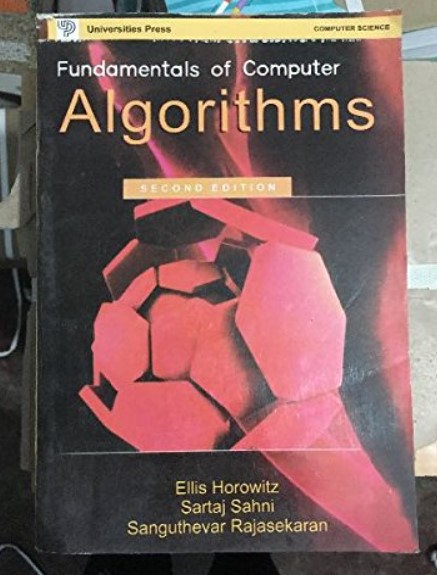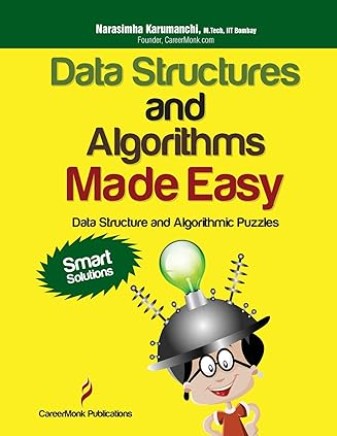Enhancing Search Efficiency with Sentinel Linear Search Algorithm
Sentinel linear search is a modified version of the traditional linear search algorithm that aims to improve its efficiency in certain situations.
In a regular linear search, you iterate through a list or array of elements, comparing each element with the target value until you find a match or reach the end of the list.
Sentinel linear search adds a modification to this process by placing a “sentinel” value at the end of the list to serve as a stopping point for the search.
–
Algorithm of Sentinel Linear Search
- Add the sentinel element (target element) at the end of the list.
- Start searching from the beginning of the list.
- Compare the current element with the sentinel.
- If the current element matches the sentinel, the search is successful, and the index is returned.
- If the current element doesn’t match, move to the next element and repeat step 3.
Example –
Traditional Linear Search
Suppose input size, n is 4
INPUT – {4, 3, 6, 1}. Target Element is 16
Code for linear search
for (int i = 0; i < size; i++)
{
if (arr[i] == target) {
return i;
}
}
Iteration 1 – i = 0
Compare i < 4, Yes
Compare 4 == 83, No
Then, i++
Iteration 2 – i = 1
Compare i < 4, Yes
Compare 3==16, No
Then, i++
Iteration 3 – i = 2
Compare i < 4, Yes
Compare 6==16, No
Then, i++
Iteration 4 – i = 3
Compare i < 4, Yes
Compare 1==16, No
Then, i++
Iteration 5 – i = 4
Compare i < 4, No
In Traditional Linear Search, total 9 searches are there.
Time Complexity for comparison – O(2n+1) which reduced to O(n)
–
Sentinel Linear Search
Target Element is 16
Suppose input size, n is 4 plus 1 = 5
INPUT – {4, 3, 6, 1, 16}
Code for Sentinel linear search
int i = 0;
while (arr[i] != target) {
i++;
}
Iteration 1 – i = 0
Compare 4 == 16, No
Then, i++
Iteration 2 – i = 1
Compare 3 == 16, No
Then, i++
Iteration 3 – i = 2
Compare 6 == 16, No
Then, i++
Iteration 4 – i = 3
Compare 1 == 16, No
Then, i++
Iteration 5 – i = 0
Compare 16 == 16, Yes
Loop ends.
In Sentinel Linear Search, total 5 searches are there.
Time Complexity for comparison – O(n+1) which reduced to O(n)
Also, the search continues until you find the target value (a match) or until you reach the sentinel value at the end of the list.
When a match is found, you know that the element is present in the list. If you reach the sentinel value without finding a match, you can conclude that the target value is not in the list.
Hence, Sentinel linear search is better than traditional linear search.
–
Advantage of Sentinel Linear Search
- The main advantage of sentinel linear search is that it reduces the number of comparison operations within the loop.
- In a regular linear search, you would typically have to check if you’ve reached the end of the list on each iteration. With the sentinel value in place, you eliminate this additional comparison, making the search process potentially faster.
- However, it’s important to note that sentinel linear search is most effective when the search operation dominates the comparison operations. If the list is very small or the comparison operation is highly optimized, the benefits of using a sentinel may be limited.
Complexity of Sentinel Linear Search
- Time Complexity – In the worst case, the sentinel linear search still performs at O(n), just like the traditional linear search. However, it tends to be faster in practice due to reduced comparisons and optimized loop conditions.
- Space Complexity – The sentinel approach adds a constant amount of space for the sentinel element, resulting in O(1) space complexity.
Test Yourself
Q1- What is Sentinel Linear Search, and how does it differ from the traditional linear search
Sentinel Linear Search is an optimized version of the linear search algorithm that places a sentinel value at the end of the list. This sentinel acts as a stopping point, eliminating the need for additional end-of-list checks during the search.
Q2- Why is Sentinel Linear Search more efficient than the traditional linear search in practice, even though both have the same worst-case time complexity?
Sentinel Linear Search reduces the number of comparison operations and optimizes loop conditions, leading to improved practical performance, despite both algorithms having a worst-case time complexity of O(n).
Q3- In which scenarios is Sentinel Linear Search particularly advantageous?
Sentinel Linear Search is most effective when searching through unordered lists or arrays, and when the search operation dominates the comparison operations.
Q4- Explain the concept of time complexity and space complexity in the context of the Sentinel Linear Search algorithm.
Time complexity represents the algorithm’s efficiency with respect to the number of operations, while space complexity measures the amount of memory space required.
Sentinel Linear Search has a time complexity of O(n) and a space complexity of O(1).
Q5- Can Sentinel Linear Search have a better time complexity than O(n) in any scenario? Explain.
No, Sentinel Linear Search maintains a worst-case time complexity of O(n) since it still requires traversing through each element in the list.
Q6- How does Sentinel Linear Search contribute to code readability and maintainability?
Sentinel Linear Search simplifies loop conditions and eliminates redundant checks, making the code more straightforward and easier to understand.
Q7- What is the primary goal of Sentinel Linear Search?
To sort elements in ascending order.
To reduce space complexity.
To improve efficiency in specific search scenarios.
To calculate the average of a list.
Ans – (3)
Explanation – Sentinel Linear Search aims to enhance search efficiency by strategically placing a sentinel value.
Q8- Which step is unique to Sentinel Linear Search compared to the traditional linear search?
Starting the search from the end of the list.
Adding a sentinel element to the list.
Sorting the list in descending order.
Using a recursive approach.
Ans – (2)
Explanation – The addition of a sentinel element is a key feature of Sentinel Linear Search.
Q9- What is the primary factor that contributes to Sentinel Linear Search’s improved practical performance?
Lower space complexity.
Reduced comparison operations.
Recursive implementation.
Parallel processing.
Ans – (2)
Explanation – Sentinel Linear Search reduces the number of comparisons, leading to improved performance.
Q10- In terms of space complexity, what impact does the sentinel value have in Sentinel Linear Search?
Increases space complexity to O(n).
Reduces space complexity to O(log n).
Increases space complexity to O(n^2).
Adds a constant amount of space, resulting in O(1) space complexity.
Ans – (4)
Explanation – The sentinel value introduces a fixed amount of space.
Q11- In which scenarios is Sentinel Linear Search particularly advantageous?
When the list is already sorted.
When the target element is the first element in the list.
When the search operation dominates the comparison operations.
When the list is large and contains duplicates.
Ans – (3)
Explanation – Sentinel Linear Search is effective when the search process itself is more significant than the comparisons.






